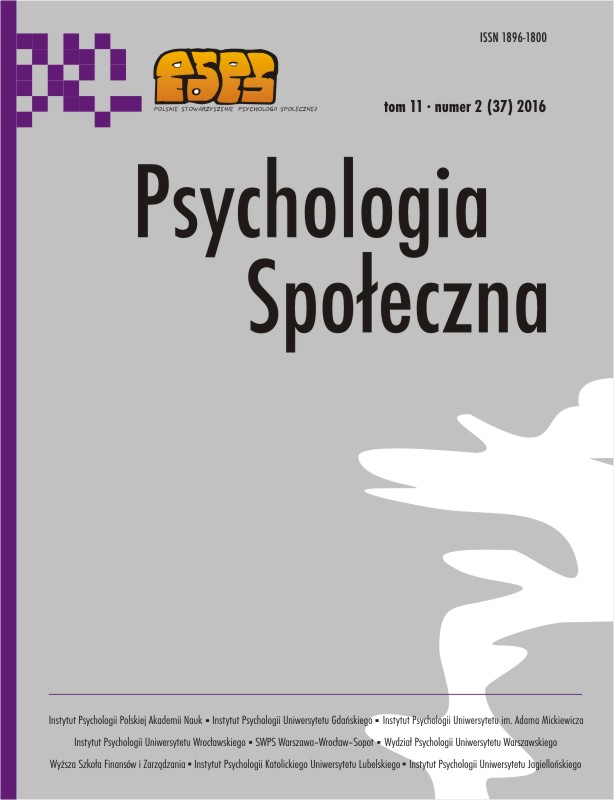Czy Inny zawsze musi być obcy? Wpływ dystansu kulturowego na postawy etnicznych Polaków wobec osób czarnoskórych i ich kategoryzację
DOES THE OTHER ALWAYS HAVE TO BE AN OUT-GROUP? THE INFLUENCE OF CULTURAL DISTANCE ON ATTITUDES OF ETHNIC POLES TOWARDS BLACKS AND THEIR CATEGORIZATION
Author(s): Maria Baran, Paweł BoskiSubject(s): Social Sciences, Psychology
Published by: Wydawnictwo Naukowe Scholar Sp. z o.o.
Keywords: cultural distance; intergroup relations; social categorisation; infrahumanization; implicit and explicit attitudes
Summary/Abstract: We conducted three studies that focused on the influence of cultural distance on attitudes towards the „Other” (a Black person). Cultural distance has been defined as similarity between the study participants and the Other regarding both language and cultural scripts. The participants were asked about their attitudes towards a Black actress from a video, who according to the experimental condition, was: (1) relating to a Polish holiday in Polish (low level of cultural distance: Polish, Christmas), (2) relating to an Afro-American holiday in Polish (moderate level of cultural distance: Polish, Kwanzaa), (3) relating to an Afro-American holiday in English (high level of cultural distance: English, Kwanzaa), or (4) was only visible in a picture (control group). Study 1 focused on the influence of cultural distance on attitudes towards the Other and his inclusion in a given cultural group (Polish or African). The Implicit Association Test (IAT) was applied. The results showed that cultural distance had an influence on the tendency to ascribe Polish or African identity to theOther. Study 1 demonstrated the classic IAT effect: participants had implicit preference towards the Whites in comparison to the Blacks. Study 2 explored the effect of cultural distance on the level of ascribed human potentials (Kofta, Baran & Tarnowska, 2014) and on attitudes towards the Other. The hypothesis predicted that the participants will find the Other with moderate cultural distance as more agreeable and will ascribe higher level of human potentials to him than to the Other with high or low cultural distance. Three factors were separated through the analysis of the Scale of Human Potentials: Reflectivity, Cultural Embeddedness and Abstractivity. The findings indicate that the Other with moderate cultural distance is judged significantly more positively than the same person with high or low cultural distance. Moreover, the participants ascribed the highest level of Cultural Embeddedness to the Other with moderate cultural distance. Study 3 explored the participants’ bias towards the cultural content and language used in the experimental videos.
Journal: Psychologia Społeczna
- Issue Year: XI/2016
- Issue No: 37
- Page Range: 136-159
- Page Count: 24
- Language: Polish

